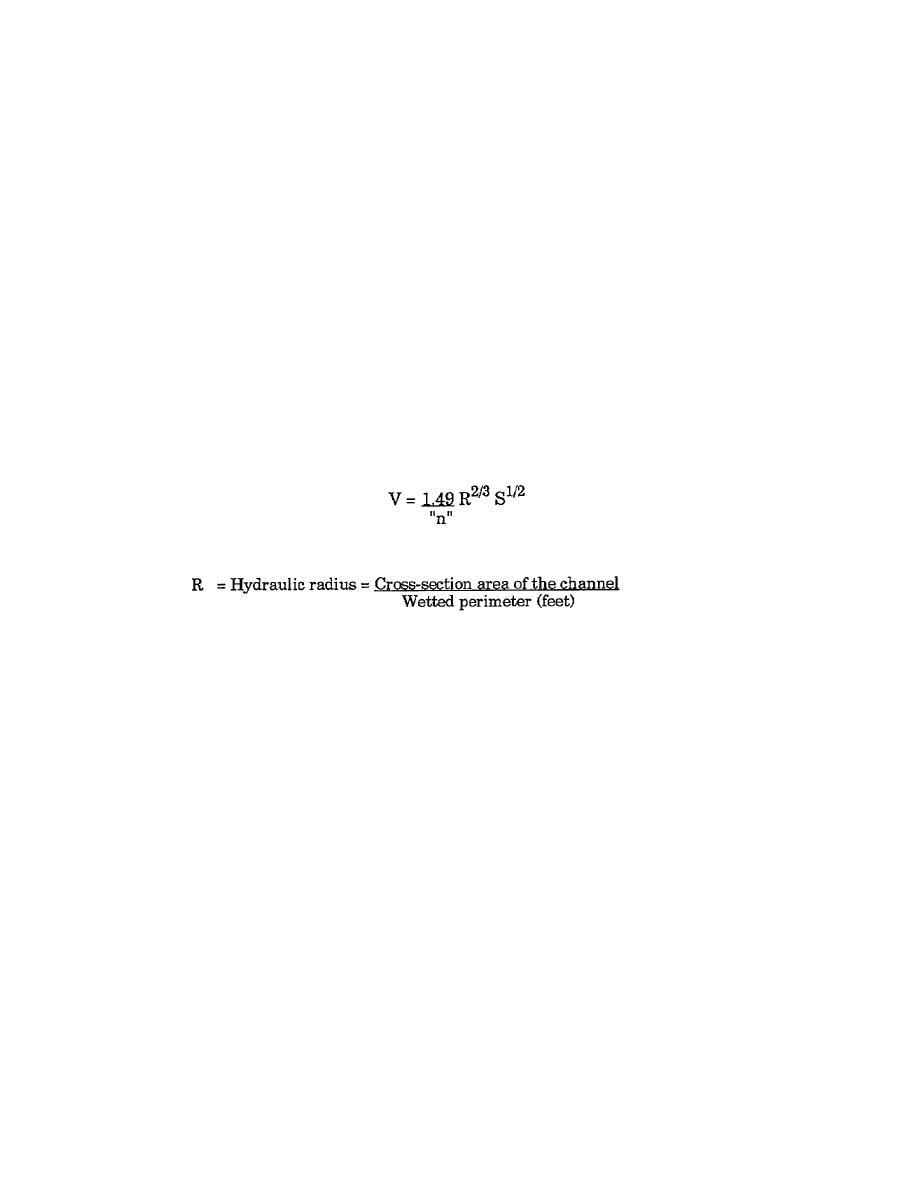
Third Assumption
The third assumption is continuity of flow. The equation of continuity states that within the section under
consideration, energy is neither created nor destroyed, thus the principle of conservation of mass holds.
The equation is expressed as Q = AV where:
Q = Rate of flow in cfs.
A = Cross-sectional area in square feet (sf).
V = Velocity in feet per second (fps).
Remember you learned how to determine Q in the first three lessons. When you design an open channel, you will
use the equation of continuity--Q = AV to check that the design is the right size to carry the water.
PART B - MANNING'S EQUATION
The size and gradient of the channel used to carry the design storm runoff may be determined by Manning's
Equation for velocity which states:
Where:
V = Velocity of flow in fps.
S
= Slope of the channel in feet per foot (ft/ft), also called hydraulic slope.
"n" = Roughness coefficient or friction factor which depends on the material lining the channel.
Runoff water is responsible for the majority of military construction failures. The engineer must be able to design
and construct ditches that will carry the proper amount of runoff without undesirable side effects.
Since design of the open channel depends so much on the use of Manning's Equation, this lesson will discuss
variables in greater detail.
VELOCITY OF FLOW, V
Channels may have different side slopes and cross-sectional areas of flow and still have the same rate of runoff on
the same longitude slope, but the velocity of flow in each ditch will be different. Since excess velocity will cause
erosion in a ditch and damage to adjacent structures, it must be held within certain limits. The maximum
permissible velocity depends entirely on
4-3
EN5465



 Previous Page
Previous Page
